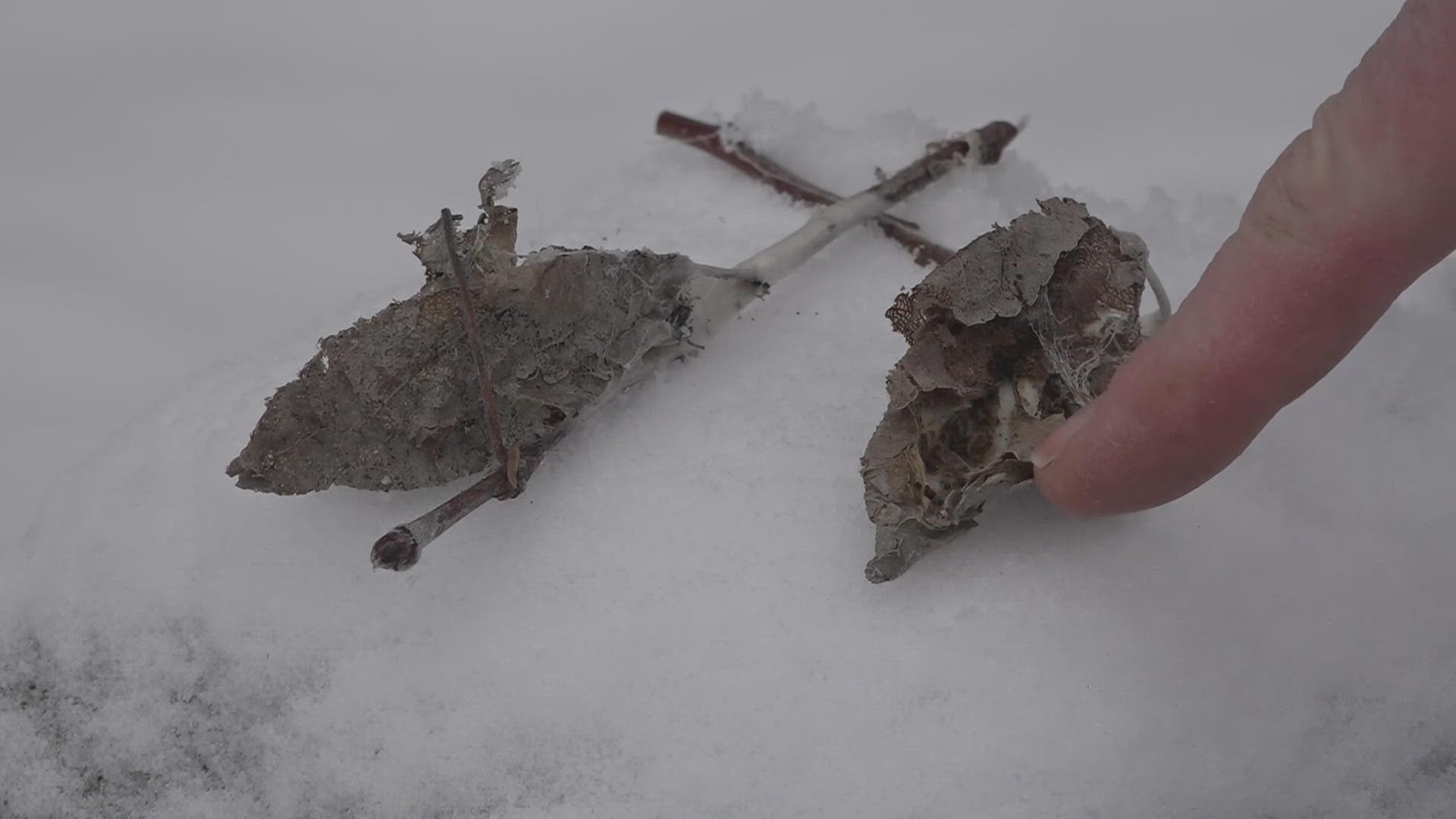MAINE, USA — Browntail moths are a growing problem throughout the state of Maine, remaining in outbreak status since 2015.
February was announced as Browntail Moth Awareness Month by the Maine Department of Agriculture, Conservation, and Forestry to increase attention on clipping and destroying their webs in the winter months.
Allison Kanoti, state entomologist and director of forest health and monitoring with the Maine Forest Service, said February and March are the best months to clip webs from trees in your yard and neighborhood.
"Right now, they're all snuggled up together with all their siblings in their little silk sleeping bags," Kanoti said.
This is why the winter months are the best time to reduce the risks.
"Normally when people start to notice that they are impacted by browntail moth, it's really too late to do any control. ... If you wait, they're going to be out exploring, looking for food and you may not catch them all in the nest," Kanoti said.
Kanoti said the toxic hairs that shed from the caterpillars can cause poison-ivy like rashes and respiratory issues if inhaled.
Brittany Shappach, a Maine Forest Service entomologist, said there are three ways to spot them.
"Browntail webs are really going to be on those outer branches. They're really not going to be on those inner crotches of the tree," Shappach said.
On bare trees, the moths are typically attached to clumps of one or two leaves at the end of branches. The second indicator is the webs will typically be the size of your palm. The third indicator is spotting the white silk of the moth's web, which is more visible on sunny days.
"The white silk that's in those webs will actually reflect back at you, and they shine just like a spotlight. They're very easy to pick out," Shappach said.
Once you spot them, it's time to start clipping. Make sure to keep all skin covered as much as possible and to wear eye protection.
Shappach said each web has 25 to 400 caterpillars in it.
"Clipping just one is still going to make an immense difference," Shappach said.
It's also important to remember to pick up the clipped branches and properly dispose of them. Kanoti said she prefers to destroy the webs in a fire, or, "if you have a friend that does maple sugaring, we're coming right on that season, throw them right into the arch and have them help make the syrup."
Another option is to soak the webs in soapy water for several days before disposing of them.
Kanoti said the more that can be done now means the less of a problem they'll be in the spring.
The Maine Dept. of Agriculture, Conservation, and Forestry is hosting several educational opportunities in February virtually and in person.
For more information about those events, click here.
For more information about where browntail moths are most populated in Maine, click here to view an interactive map.

